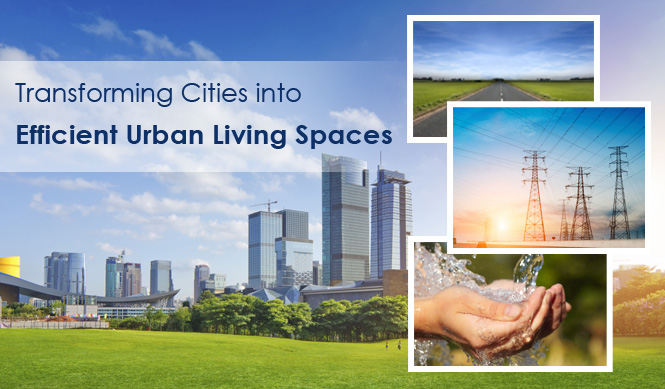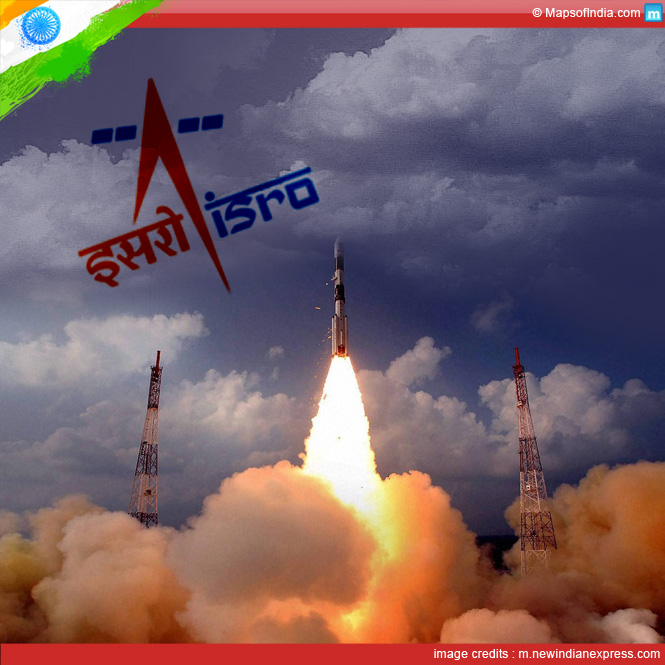 Prime Minister Narendra Modi has finally launched his dream project of building 100 Smart Cities on 29 April 2015, when the Cabinet chaired by him approved of Rs 48,000 crore outlay to be spent on the project over the next five years.
Prime Minister Narendra Modi has finally launched his dream project of building 100 Smart Cities on 29 April 2015, when the Cabinet chaired by him approved of Rs 48,000 crore outlay to be spent on the project over the next five years.
The Cabinet also approved the Atal Mission for Rejuvenation and Urban Transformation (AMRUT), a mission aimed at transforming 500 cities and towns into efficient urban living spaces, with special focus on a healthy and green environment for children. The Cabinet approved Rs 50,000 crore for this mission which is to be spent over the next five years.
Both projects are interlinked, however, each has a special focus on urban infrastructure development that India needs if it has to emerge as a strong contender for a developed nation status, in times ahead.
So how are the two projects different?
Atal Mission for Rejuvenation and Urban Transformation (AMRUT) has a wider reach in terms of the number of cities covered and therefore the funds available for each city would be proportionately less. The mission takes a project approach in working towards improving existing basic infrastructure services like extending clean drinking water supply, improving sewerage networks, developing septage management, laying of storm water drains, improving public transport services and creating green public spaces like parks etc, with special focus on creating healthy open spaces for children.
500 cities and towns will be selected on the basis of population i.e. one lakh and above, while the other criteria of selection will apply for certain locations like tourist popularity, cities located at the stems of main rivers, certain popular hill towns and some select islands. The centre is laying out guidelines on the basis of which states will be free to suggest cities that they wish to bring under AMRUT. AMRUT is actually a new avatar of the existing JNNURM and will extend support to till 2017 to those projects that are at least 50% complete under the earlier JNNURM. Over 400 existing projects are likely to benefit from this.
The Smart Cities Mission will focus on developing 100 select Smart cities by focusing on optimising efficiencies in urban services and infrastructure management, with proactive use of technology and people participation. The Mission will support each selected city with Rs 100 crore per year, for a period of five years.
Given the fact that each city and town is unique and has its own priorities for development, the Centre proposes an ‘area based’ approach to development that will cover retrofitting or redevelopment as per Local Area Plan. While retrofitting will focus on removing deficiencies in existing local infrastructure, redevelopment will focus on re-building those areas where existing infrastructure cannot be converted or improved further due to limitations of space.
The Smart Cities Mission will also look at optimizing basic core infrastructure services like clean drinking water supply, optimized power distribution, introducing efficient solid waste management, affordable housing to cater to various sections, efficient and intelligent public transportation systems and active use of IT infrastructure to improve service delivery and management. New cities planned will incorporate all aspects of urban infrastructure and ensure green and sustainable living.
Centre walks the talk on giving more power to the states
Through both these missions, the Centre has taken a fresh approach by involving active participation by the states and giving the control to ‘shortlist’ cities and towns to be brought under the respective missions and take responsibility for their implementation and fund allocation. In addition, the state will undertake supervision and monitoring of project milestones, as per agreed guidelines.
Unlike earlier practice, the Centre will not appraise project performance and will leave that to the respective states. Central contribution of funds release will be linked to broad mission objectives being met.
The states will be free to ‘suggest’ cities as per selection matrix laid out by the centre. For instance, for the Smart Cities Project, a ‘Smart City Challenge’ competition will be launched for cities that wish to come under the mission plan. The Centre plans to link financing to the ability of each city to meet the mission objectives.
Special Purpose Vehicles (SPV) will be created for each selected city and the respective states will be responsible to ensure that adequate resources are made available to the SPVs. The Centre will extend funding support to the extent of 50% for cities with a population of up to 10 lakh, and a third of the project cost for cities with a population above 10 lakh.
Central funding to the states for each city will be released in three installments in the ratio of 20:40:40 and would be linked to milestones being achieved, as per State Annual Action Plan.
To promote early implementation by the states, the centre will incentivise the states by offering to release 10% of the budget allocation, based on reforms implementation in the previous year.
Through implementation of these missions, the Central government hopes to catalyze transformation of approach and functioning of the existing municipal corporations into professionally run efficient bodies. For mission success, it is imperative to introduce professional staff that can introduce e-governance, transparency in project tendering and monitoring, reviewing existing Building by-laws, transparent and efficient funds allocation and management, efficient tax collection mechanisms, and most of all, inclusion of people participation and focus on people-centric services.
If successful, this will indeed be a significant step for India to seriously build a nationwide green and sustainable urban infrastructure.
Challenges ahead
Till now central control over projects did not succeed in improving or incentivising state level involvement. With the new approach of extending central funding support and leaving it to the states to execute and monitor the projects as per their priorities and local needs, the centre has shifted the challenge and responsibility to the states.
The problem is that municipal functioning at the state level is heavily politicized and corrupt. The big question is – will the states be able to rise above petty politics and ensure corrupt free and efficient implementation of mission objectives? There cannot be a successful urban mission of transformation without establishing the requisite professionally run management structure, with necessary checks and balances built-in, and one that has the ability to adopt technology and deliver efficient services.
Do the states have the political will to undertake the necessary transformation?
Will the missions succeed or will they end up as white elephants?
As with any large project, there will always be the naysayers. Both ‘AMRUT’ and the ‘Smart Cities Mission’ have come under criticism for being too ambitious and offering too little by way of funding.
That maybe partially true. While it is true that the cities will require significantly more than what has been offered by the centre, however, it is also true that the states will be taking their own initiatives in raising funds and resources to meet mission objectives. Between both missions, the central funds allocated is around Rs 100,000 crore, but with states contributing their share, the total allocation could well touch Rs 200,000 crore.
It must be seen in the context where most cities and towns in India have suffered years of neglect, with minimal investment in improving existing infrastructure or building new ones. This mission is a beginning towards initiating the much needed transformation. After all, urban infrastructure development cannot stop with one government but must remain a part of an ongoing process. The fact that this government has initiated steps with active participation from the states, could well give much needed impetus to an overstressed and obsolete infrastructure. It’s time for India to transform.
More Programmes Launched by Modi
Government to set up 300 rural clusters by 2020
Gram Uday Se Bharat Uday Abhiyan
Atal Pension Yojana
MUDRA Bank Yojana
Sukanya Samriddhi Account
Start-up India, Stand-up India
Pradhan Mantri Jeevan Jyoti Bima Yojana (PMJJBY)
Pradhan Mantri Suraksha Bima Yojana (PMSBY)
Pradhan Mantri Kaushal Vikas Yojana
Pradhan Mantri Krishi Sinchai Yojana
Pradhan Mantri Awas Yojana (PMAY)
One Rank One Pension Scheme
Seventh Pay Commission
Garib Kalyan Yojana
Integrated Power Development Scheme (IPDS)
All Information about Digital India Programme
DigiLocker
eBasta – Features and Benefit for students
Atal Mission for Rejuvenation and Urban Transformation
Mahatma Gandhi National Rural Employment Guarantee Act (MGNREGA)
Beti Bachao Beti Padhao Scheme
Pahal Scheme
Jan Dhan Yojana
Skill India Programme
Modi’s Sagar Mala Project
Swachh Bharat Abhiyan: Making India Clean & More




